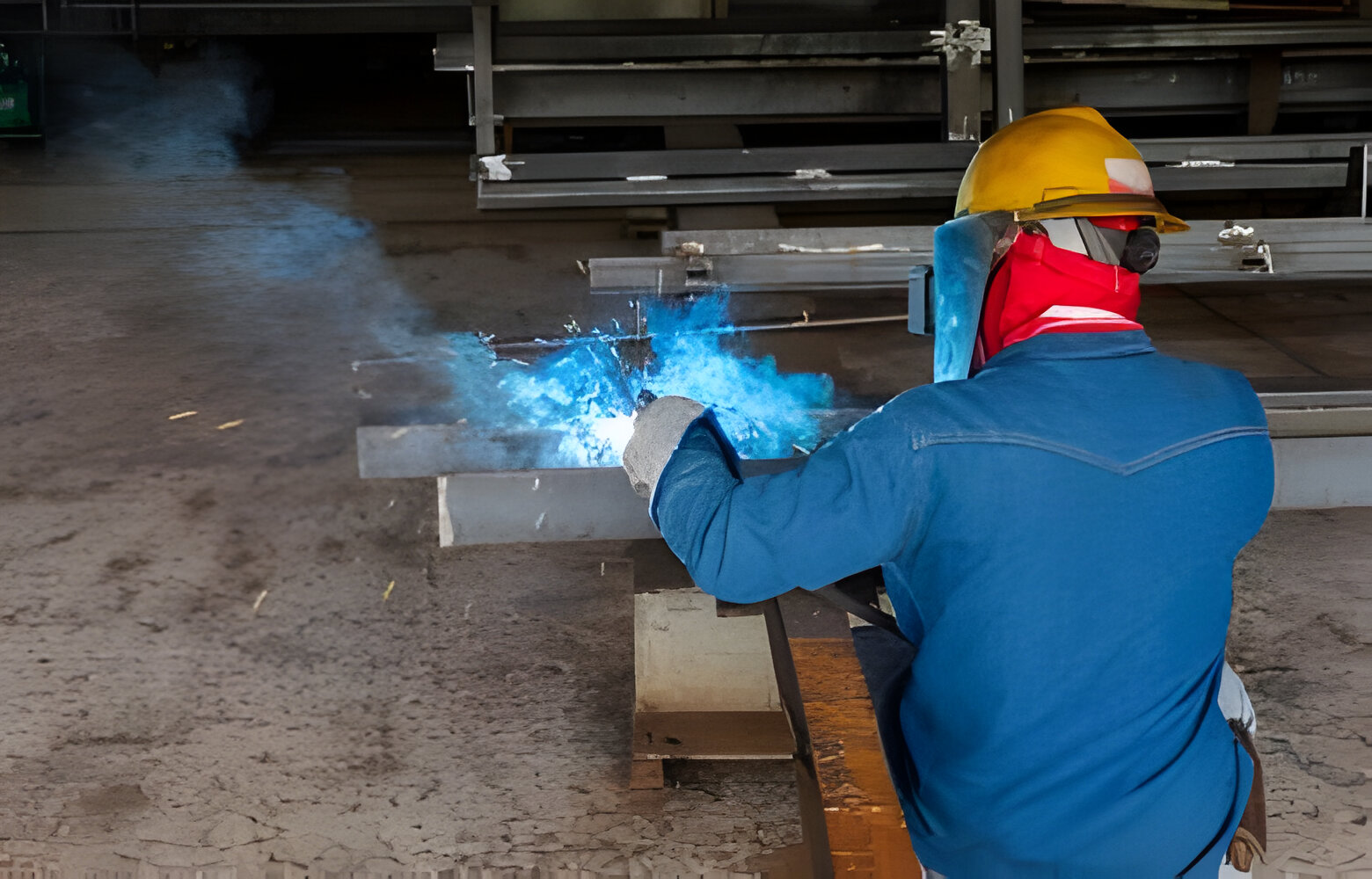All You Need To Know About Flux Core Welding

Flux core welding and MIG welding have almost similar characteristics. However, flux core welding is a bit unique. They both use filler wire. The difference between MIG and Flux-core is the electrode used and they way the melted metal is shielded from the atmosphere.
In flux core welding the filler wire is filled with flux. In MIG a shielding gas is used. In FCAW the flux shields and coats the weld pool. The weld then cools slowly creating a very strong weld.
10 Thing You Must Know About Flux Core Welding
Which Type Of Welding Is Stronger?
You might need to know about the flux core and MIG strength. This question has been lingering in many welders mind. However, these welding types are very common processes in the world.
Both FCAW and MIG have their advantages and disadvantages. The main difference between the two is that in FCAW external shielding gas is not needed like in MIG welding.
It is really hard to determine the strength of the two welding types because the strength of a weld is determined by several aspects. These are: – the type o metal, the welding environment and your needs.
Some welders maintain that the FCAW is stronger because it can weld thicker metals.
Can You Weld Aluminum With A Flux Core Welder?
Many people have been asking this question for sometime without finding a satisfactory response. Many researchers have tried to test if they can successfully weld aluminum using a flux welder in the laboratory. Even though some claim it is possible, the procedure has not been tried commercially.
How Flux Core Welding Works
There are two processes in FCAW. The self shielded and the gas shielded FCAW (dual FCAW). The difference between the two variants is the fluxing agents found in the consumables. The self shielded FCAW is usually used outdoors whereby the wind blows the shielding gas away.
The electrode used in FCAW is tubular. In this electrode, there are materials producing the flux agents and the shielding gases. Therefore an external shielding gas is not needed in FCAW. When working with thick materials, flux core welding guarantees a good and strong weld with a single pass.
The FCAW is recommended for outdoor use due to the shielding gas produced by the wire. Welders feel that FCAW is convenient for them because they don’t have to carry the gas cylinders to welding points.
Advantages Of Flux Core Welding
- Good for thicker joints because it offers great penetration.
- Has its own shielding method hence increasing mobility
- After learning the setup process, it is very easy for a learner to master the welding process.
- FCAW can deposit up to 25 ponds of wire in an hour, making it efficient for big projects.
- In FCAW welding can be done outside even if it’s windy.
- Rust and dirt doesn’t affect welding in flux core welding.
- FCAW can be done in overhead or even vertical positions.
Disadvantages Of Flux Core Welding
- Produces very unpleasant fumes therefore it requires a highly ventilated place.
- Flux core welding is expensive because the flux core wires are costly.
- It doesn’t give a smooth finish hence a welder might need to clean up the slag.
Polarity
In flux core welding polarity of DC and AC can be used but the pros recommend DC polarity. This is because when you use AC your weld isn’t stable. DC electrode positive is the best for flux core welding. The positive terminal gets connected to the electrode. This results in the reverse flowing of the electrons.
In flux core welder, amperages change with wire feed speed. The slower the wire feeds, the less contact the electrode has therefore producing less heat.
Shielding Gases Used In Flux Core Welding
In flux core welding, a shielding gas is not required unless it’s for the dual flux core welding. The gasses used for the shielding are:-
- Carbon dioxide
- Argon
- A mixture of Argon 75% and carbon dioxide 25%
- Argon and Oxygen.
FCAW Welding Techniques
Before practicing to weld using the flux cored electrode, try to understand the right one as per the label. Flux cored electrode come in two different position designations.
The “o” is for flat welding or horizontal welding. The electrode with designation “1’” is used in all welding positions.
What Causes Porosity In FCAW?
The biggest problem which affects FCAW is wire porosity and the warm holes. When an electrode is not stored properly, it picks moisture. When the welder uses it for welding it results to worm tracks and porosity.
To avoid this, a welder is advised to cut off 10 feet of the electrode before using it for welding. However for a welder to avoid these problems, he/she should store the electrodes in a dry place that is free from moisture.
How To Weld Aluminum Using A Flux Core Welder
Can you weld aluminum using a flux core welder? If there was a flux cored aluminum wire, maybe it would have been possible. Many years ago, aluminum wires were developed and tested in the laboratory. The wires were never used for commercial purpose.
Aluminum has a high electromotive force which makes elements and compounds ineffective fluxes for it. The chemicals used in fluxes for the carbon steels and stainless steels do not work on aluminum.
The fluxes that are made for aluminum can be very dangerous. They are very corrosive and they also absorb water from the air.
Final Word
Learning flux core welding is simply mastering the skill of using different electrodes in a MIG Welding machine. Do not shy away from it, practice make perfect so start now.
